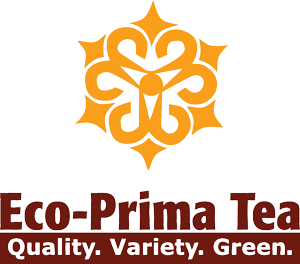
Ceylon tea comes from the island republic of Sri Lanka which is in the Bay of Bengal below the southeastern tip of India. Sri Lanka was formerly a British crown colony and it kept this name almost a quarter century after its independence. In 1972, the country changed its name to Sri Lanka and after heated debate, it was decided that abandoning the name "Ceylon Tea" would be devastating to its thriving tea industry. So a priceless brand was saved.

The famous Lion symbol of Ceylon Tea comes with specific burdens of use. First, any tea bearing the Lion Logo must be grown, manufactured & packed in Sri Lanka. Even a blend that is 95% Sri Lankan cannot be described as Ceylon Tea. Overseas, 100% tea from Sri Lanka may be called Ceylon Tea but not bear the famous Lion Logo.
Sri Lanka may be a tiny country but is a giant in the world of Tea. Tea production not only accounts for almost 15% of its foreign exchange but also accounts for over 65% of its export agriculture revenue. The industry, directly or indirectly provides employment to almost 20% of its population. For several years, it even bore the distinction of being the world's leading exporter of tea. For a country small in geographic size, this is, indeed, remarkable.

The quality of Ceylon Tea is aided by its geography - both high and low country, humidity and cool temperatures, sun and rain and fertile soil. Some of the famous tea areas in Ceylon are the Kandy and Nuwara Eliya District. Teas from the latter are often called 'the Darjeeling of Ceylon'. The origin of Ceylon Tea is often attributed to James Taylor, a British citizen who arrived in Ceylon in 1852. Taylor visited India in the 1860's to learn the basics of growing tea on plantations and returned to Kandy and started the Loolecondera Tea Estate. In 1875, James Taylor sent the first shipment of Ceylon tea to the London Tea Auction. He is still revered in Sri Lanka.

The Tea Industry of Sri Lanka celebrates its 150th Anniversary in 2017. Ceylon produces a significant variety of teas, both in grade and type. Although Black tea still dominates, Ceylon Green teas are prized for their mild, nutty and slightly astringent quality. Leaf style is particularly important for Ceylon teas. Its classic long, wiry leaf style for an OP grade is world-famous. Well-known tea regions are Nuwara Eliya, Dimbula, Uva, Kandy and Ruhunu. Ceylon tea is brisk, not too overpowering in flavor, not as earthy or malty as other well-known black teas such as Assam or Yunnan and is often the favorite cup of tea drinkers.
We offer Ceylon Black and Green Teas. Kenilworth and New Vithanakande are our very popular black OP grades. The Pekoe from the Ruhunu region is a completely different leaf style - rolled in style and producing a thicker, deeper cup for those who prefer a touch of milk. Idulgashinna Tea Estates is certified organic and fair trade and we carry both their Black and Green grades. Our house Earl Grey blend called, appropriately, Silver Tips Earl Grey, is on a Ceylon OP base and our French Breakfast also starts with a Ceylon Black. Enjoy them all - you are tasting history.
Leave a comment







